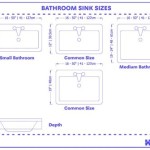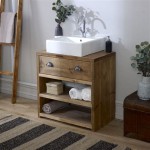Small Dark Bathroom Ideas: Maximizing Space and Light
Designing a small, dark bathroom presents a unique set of challenges. Limited square footage, coupled with the absence of natural light, can make these spaces feel cramped and uninviting. However, with careful planning and creative design choices, it is possible to transform a small, dark bathroom into a functional and aesthetically pleasing space. This article will explore various strategies to maximize space and introduce light into these often-overlooked areas of the home.
Strategic Use of Light and Color
One of the most impactful changes is the strategic application of light and color. In a small, dark bathroom, it is crucial to maximize the available light, both natural and artificial. This involves carefully selecting colors, finishes, and lighting fixtures that reflect light and create a sense of spaciousness.
Color Palette: Light and neutral colors are essential. White, off-white, cream, and pastel shades are all excellent choices for walls, ceilings, and floors. These colors reflect light, making the room feel brighter and larger. Consider using a monochromatic color scheme, where various shades of the same color are used throughout the bathroom. This creates a cohesive and streamlined look, which can enhance the feeling of spaciousness. Avoid dark and heavily saturated colors, as they absorb light and can make the bathroom feel even smaller and darker.
Finishes: The type of finish used on surfaces also plays a significant role. Glossy or semi-gloss finishes reflect more light than matte finishes. Therefore, consider using a glossy paint for the walls and ceiling. Similarly, polished tiles or countertops will reflect light and add a touch of elegance to the space. Mirrors are indispensable for reflecting light. A large mirror above the vanity can visually double the size of the room. Mirrored cabinets can also provide additional storage while enhancing the reflective qualities of the space.
Lighting Fixtures: Adequate lighting is critical. Replace any outdated or dim lighting fixtures with brighter, more energy-efficient options. Consider layering different types of lighting to create a well-lit and balanced space. Recessed lighting in the ceiling provides general ambient light. Task lighting, such as sconces flanking the mirror, provides focused light for grooming tasks. Accent lighting, such as LED strip lights under the vanity or around the mirror, can add visual interest and enhance the overall ambiance. Ensure that all lighting fixtures emit a warm, natural light to create a welcoming and comfortable atmosphere. Avoid harsh, cool-toned lighting, as it can make the bathroom feel sterile and uninviting.
Natural Light Enhancement: If possible, take steps to maximize any existing natural light. Avoid using heavy curtains or blinds that block light. Instead, opt for sheer curtains or blinds that allow light to filter through while still providing privacy. Consider installing a skylight or sun tunnel if feasible. These architectural features can bring natural light into the bathroom without compromising privacy. If privacy is a concern, consider using frosted or textured glass for windows to allow light to pass through while obscuring the view.
Optimizing Space and Storage
In a small bathroom, every inch of space counts. It’s important to optimize the layout and storage solutions to make the most of the limited square footage. Clever storage ideas and space-saving fixtures can significantly improve the functionality and comfort of the bathroom.
Layout Considerations: When remodeling a small bathroom, consider the layout carefully. A well-planned layout can make a significant difference in how spacious the bathroom feels. A wall-mounted toilet can free up floor space, making the bathroom feel larger. A corner sink can also save space compared to a traditional vanity. Consider a shower curtain instead of a glass shower door, as it takes up less space when not in use. Alternatively, a walk-in shower with a partial glass screen can create a modern and open feel.
Vertical Storage: Maximize vertical space by incorporating tall and narrow storage units. A tall linen cabinet can provide ample storage for towels, toiletries, and other bathroom essentials. Shelving above the toilet or vanity can also provide additional storage space. Consider using floating shelves, as they create a clean and minimalist look while providing storage. Wall-mounted storage solutions, such as toothbrush holders and soap dispensers, can free up valuable counter space.
Vanity Selection: Choose a vanity that is appropriately sized for the bathroom. A vanity that is too large can overwhelm the space, while a vanity that is too small may not provide enough storage. A vanity with drawers and cabinets can help to keep the countertop clutter-free. Consider a vanity with a built-in sink to save space. If space is extremely limited, a pedestal sink may be the best option. However, keep in mind that pedestal sinks do not provide any storage.
Hidden Storage: Incorporate hidden storage solutions to keep the bathroom organized and clutter-free. A medicine cabinet with a mirrored door provides concealed storage for toiletries. A storage bench in the shower can provide a place to sit and store shower essentials. Consider installing pull-out drawers or shelves in cabinets to maximize storage space and make it easier to access items. Over-the-door organizers can be used to store toiletries, cleaning supplies, or other small items.
Decluttering: Regularly declutter the bathroom to keep it organized and spacious. Get rid of any items that are not used regularly. Store extra toiletries and supplies in another room. Use clear storage containers to organize items and make it easier to find what you need. Keeping the bathroom tidy and clutter-free will make it feel larger and more inviting.
Incorporating Reflective and Textural Elements
Beyond color and layout, incorporating reflective and textural elements can significantly enhance the visual appeal and perceived spaciousness of a small, dark bathroom. These elements add depth, interest, and a sense of luxury to the space.
Mirror Placement: Mirrors are invaluable for reflecting light and creating the illusion of space. A large mirror above the vanity is a must-have in a small bathroom. Consider extending the mirror to the ceiling to create a more dramatic effect. Mirrored tiles can also be used to add a touch of glamour and reflect light. Experiment with different shapes and sizes of mirrors to find the best placement for your bathroom.
Metallic Accents: Incorporate metallic accents to add a touch of elegance and reflect light. Chrome, nickel, and brass finishes are all excellent choices for faucets, showerheads, and hardware. Metallic accessories, such as towel bars, soap dishes, and toothbrush holders, can also add a subtle shimmer to the space. Avoid using too many metallic accents, as this can make the bathroom feel cluttered. Instead, focus on using a few strategically placed metallic elements to create a focal point.
Textural Variety: Introduce textural variety to add depth and interest to the bathroom. Use different textures for walls, floors, and accessories. For example, consider using textured tiles for the shower walls or a textured wallpaper for the accent wall. A woven basket can add a natural touch and provide storage for towels or toiletries. A plush bath mat can add warmth and comfort to the space. Avoid using too many textures, as this can make the bathroom feel overwhelming. Instead, focus on using a few carefully chosen textures to create a balanced and harmonious look.
Glass and Transparent Materials: Use glass and transparent materials to create a sense of openness and lightness. A glass shower door or screen allows light to pass through and makes the shower area feel larger. A glass countertop can also create a sleek and modern look. Transparent accessories, such as glass jars and containers, can add a touch of elegance and allow you to see the contents easily. Avoid using opaque materials that block light and make the bathroom feel smaller.
Art and Décor: Add a few carefully chosen pieces of art and décor to personalize the bathroom and add visual interest. A small piece of artwork can add a pop of color and personality to the space. A plant can add a touch of nature and bring life to the bathroom. Avoid cluttering the bathroom with too many accessories, as this can make it feel smaller and more cramped. Instead, focus on using a few carefully chosen pieces to create a balanced and harmonious look.
By implementing these ideas, a small, dark bathroom can be transformed into a brighter, more spacious, and inviting space. Careful planning and thoughtful design choices are essential for maximizing the potential of these often-challenging areas of the home. Through strategic use of light, color, space, and reflective elements, a small, dark bathroom can become a functional and aesthetically pleasing retreat.

38 Dark Bathroom Ideas Industrial Inner City Modern And More

25 Small Bathroom Design Ideas With Major Chic Factor Remodel Tiny Bathrooms

Rounded Rectangle Metal Framed Curated On Ltk Half Bathroom Decor Small Dark Powder Room

Timeless Small Dark Fabulous Bathroom Homemaking Without Fear

99 Stylish Bathroom Design Ideas You Ll Love Small Dark Half Decor Contemporary Powder Room

25 Best Paint Colors For Small Bathrooms Making Maanita

38 Dark Bathroom Ideas Industrial Inner City Modern And More

26 Small Space Dos And Don Ts That Can Make Or Break A Design Gray Bathroom Decor Powder Room Remodel

12 Small Bathroom Ideas To Create A Luxurious Sanctuary Pulse Showerspas

8 Magical Small Bathroom Design Ideas For Your Home
Related Posts







